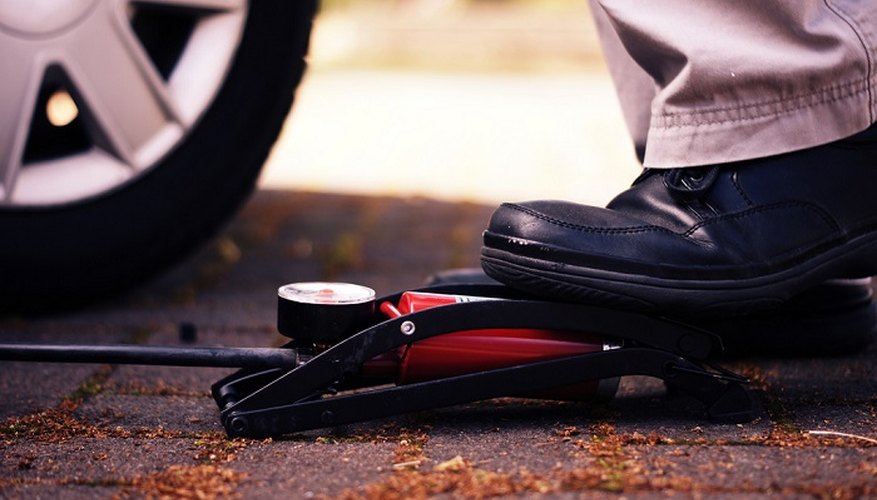Using a foot pump to inflate a tyre requires minimal technical expertise and a small amount of physical exertion. Keeping the air properly inflated can increase the lifespan of the tyres and make them safer to travel on. Many foot pumps are sold with a range of tyre adaptors for inflating different tyre types.
Prepare the tyre and vehicle for inflation. Different types of tyres require different adaptors, such as adaptors for the small Presta or Schrader valves used on bicycle tyres. Some valves also require lubrication before you can start the inflation process. Refer to your vehicle or bike user manual for specific instructions.
- Using a foot pump to inflate a tyre requires minimal technical expertise and a small amount of physical exertion.
- Different types of tyres require different adaptors, such as adaptors for the small Presta or Schrader valves used on bicycle tyres.
Attach the nozzle of your foot pump to the valve stem of the tyre you want to inflate. Unscrew the cap from the tyre's valve before affixing the nozzle of your foot pump. Screw the nozzle onto the valve -- ensure that you have made an airtight seal between the nozzle of the foot pump and the valve stem of the tyre.
Push down on the foot pedal of the pump and start inflating the tyre. If your pump has a gauge, you can take a reading of the tyre's air pressure. The unit of measurement is usually either the Bar or PSI. Read the vehicle's manual to find out the required air pressure for the tyres. Establish where the appropriate air pressure is displayed on the pump's gauge and continue to inflate the tyre until it reaches this pressure. You can also buy separate tyre pressure gauges if your pump does not have one.
- Attach the nozzle of your foot pump to the valve stem of the tyre you want to inflate.
- Establish where the appropriate air pressure is displayed on the pump's gauge and continue to inflate the tyre until it reaches this pressure.
Unscrew the nozzle of the foot pump and replace the cap back on the tyre's valve. Fasten the cap until it fits tightly, but ensure you leave it so it can be unscrewed by hand at a future date. Pack up your foot pump and place it in storage or the boot of your car. You should always ensure that the hose of the pump is not twisted and does not have any weight or pressure placed on it when storing it.
- Unscrew the nozzle of the foot pump and replace the cap back on the tyre's valve.
- Fasten the cap until it fits tightly, but ensure you leave it so it can be unscrewed by hand at a future date.
Test your tyre in a controlled environment. If you have inflated a car's tyres, drive with caution to a nearby car park and try a few simple manoeuvres. Afterwards, assess the pressure of your tyres to see if they have remained near the pressure you inflated them to. It is natural for the pressure to decrease a little when you first use the vehicle.
WARNING
Do not over-inflate tyres. Once tyres reach very high levels of pressure they can rupture, causing irreparable damage to the tyre and, potentially, danger to you.
